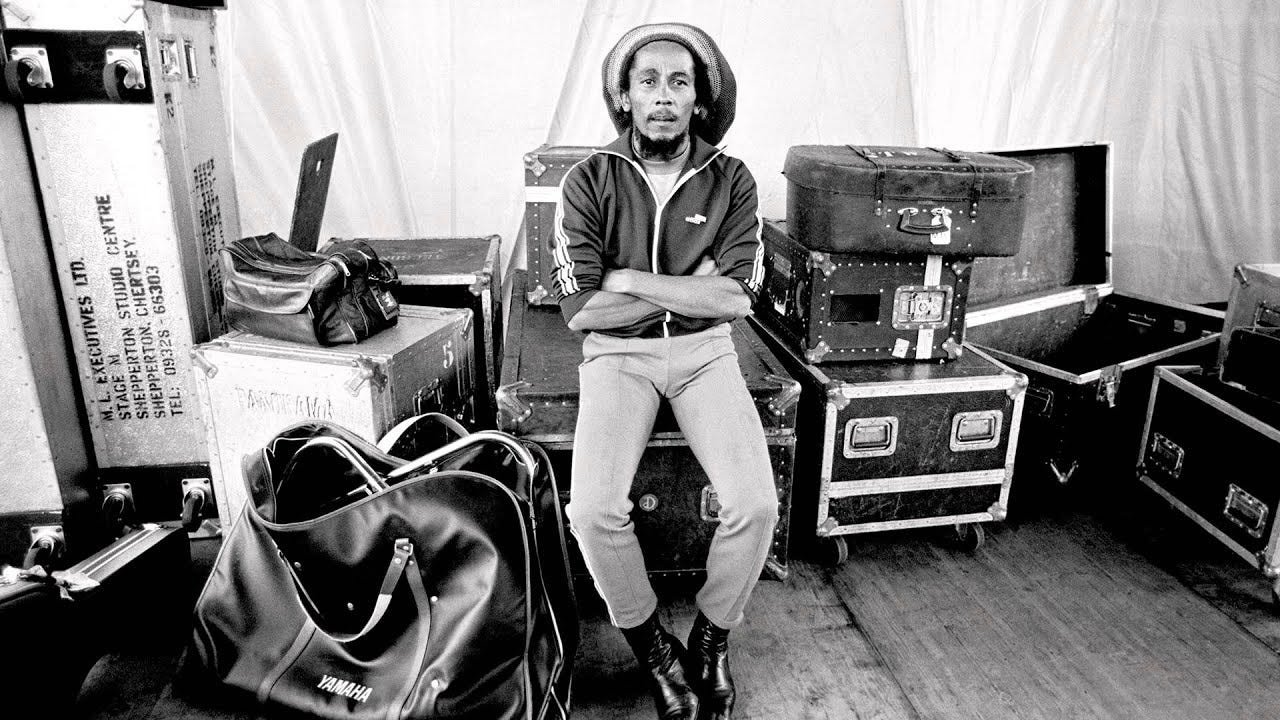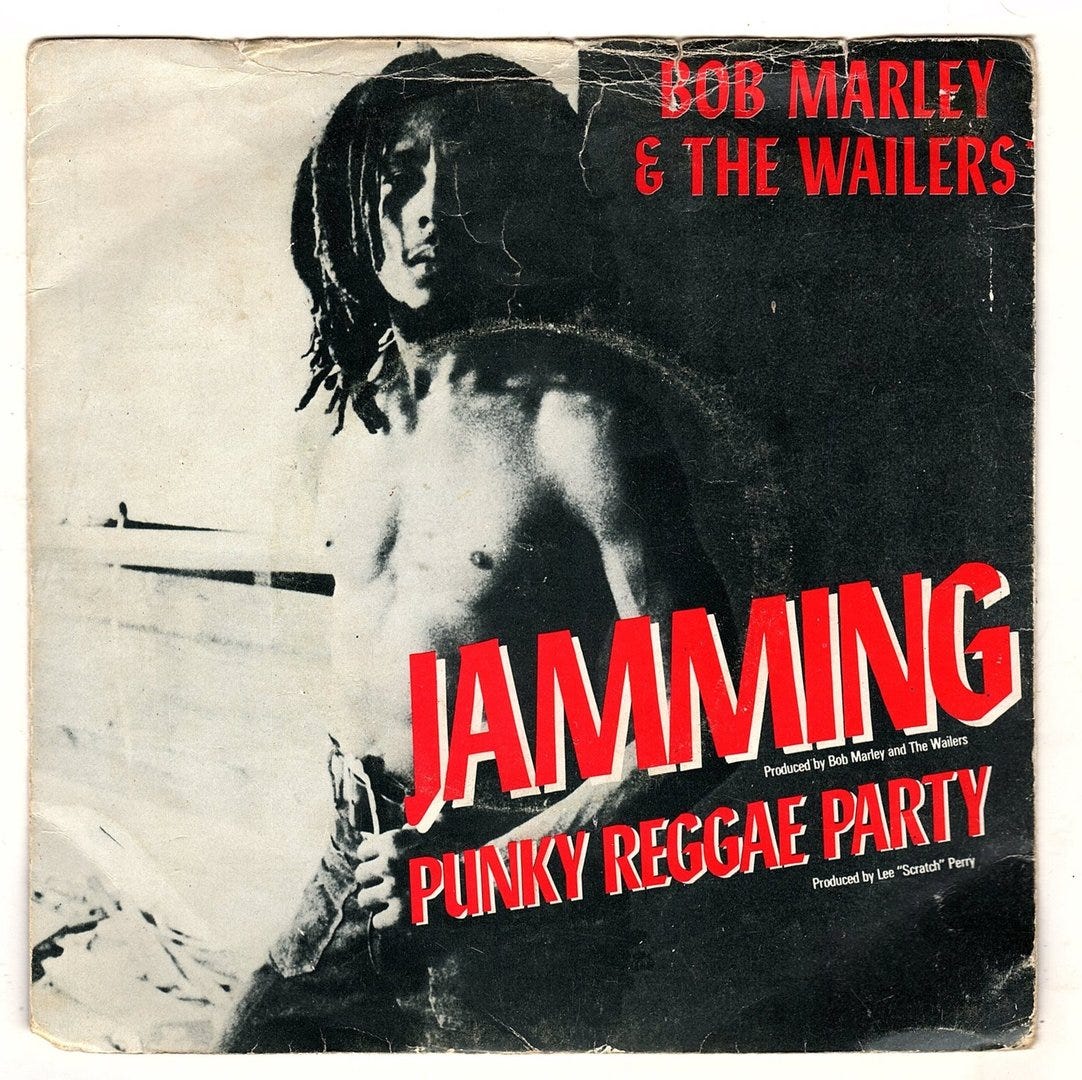I’m 11 years old attending Winona Public School, grade 7 and I clearly remember having my Sony Walkman that travelled with me everywhere. After 4 years of attending Kensington Public School in the Kensington Market area of Toronto, this was a significant shift and new area for me. It was closer to home and I already had friends in my neighbourhood that would be joining me in this new, more mature scholastic endeavor and Jammin was part of my soundtrack.
What is it about songs that do more than just entertain, those small few that become part of you, define a moment and embed themselves forever into your life. That’s just from a listening perspective. As a musician, you still absorb the music as a fan, but then it reaches deeper - lodging itself into your brain, becoming part of your arsenal of sounds, ideas and approaches to your own musical creations. For me, Jammin’ proved to be a seminal track that has remained with me for over 40 years. The style, production, instrumentation and performances all combined to create something timeless. I’m biased when it comes to Marley as I, with 100% honesty, cannot point to one single song that is not strong. It’s rare for an artist to have all Killer and No Filler, as the phrase goes, but Marley achieved that and helped to bring reggae fully into the mainstream, with the help of makeover artist and Chris Blackwell, founder of Island Records.
The two were able to raise the sounds that had been with Jamaicans for years to a global audience. Keeping the foundation of the groups sound but adding some shine to attract the rockers with lead guitar solos, slicker production and mixing and visuals of the band. It worked. But at the core , the music and message remained unfiltered. Jammin’ is just one of many songs that I had on repeat but it was the endless “rewinds” on my portable cassette and the absolute hypnotize rhythms that kept this 7th grader rapt and ready to squeeze out any musical ideas and information I could glean - not knowing why until much later in life.
Bob Marley - "Jamming": This song, with its smooth, mellow groove, was the first to captivate me, reflecting the powerful impact of reggae's blend of rhythms. Let’s dive into it:
Album and Release
Album: "Jamming" is featured on the album Exodus, released on June 3, 1977.
Single Release: The song was also released as a single with "Punky Reggae Party" as the B-side.
Recording Studio and Production
Recording Location: The track was recorded at Island Studios in London, England, during the 1976–1977 sessions for the Exodus album
Producers: The song was produced by Bob Marley and Chris Blackwell.
Musicians
The personnel on "Jamming" include:
Bob Marley: Lead vocals and rhythm guitar.
Aston "Family Man" Barrett: Bass guitar.
Carlton "Carly" Barrett: Drums.
Tyrone Downie: Keyboards.
Alvin "Seeco" Patterson: Percussion.
Musical Equipment and Recording Techniques
Detailed specifics about the equipment and recording techniques used for "Jamming" are limited. However, during the 1970s, Bob Marley's recordings often employed:
Microphones: The Neumann U87 was commonly used for vocals, providing a warm and clear sound.
Mixing Console: Helios consoles were prevalent in studios like Island Studios, known for their distinctive analog warmth.
Recording Approach: Due to limited multi-track capabilities at the time, drum kits were typically recorded using minimal miking techniques, often with just two microphones—one for the kick drum and another capturing the rest of the kit—to achieve a solid, cohesive sound.
Cultural Significance
The term "jamming" in Jamaican patois refers to a celebratory gathering or party. The song embodies themes of unity, resilience, and collective joy, resonating with audiences worldwide. Notably, the lyrics include the line "No bullet can stop us now," reflecting Marley's unwavering spirit following an assassination attempt on December 3, 1976.
"Jamming" remains a testament to Bob Marley's enduring legacy, capturing the essence of reggae music and its profound cultural messages.
MY TAKE AWAYS (What I incorporated into my productions)
The first thing that stands out is the frequency control - rolling off the top end and lows. All the instruments are equally matched which creates a sense of intimacy.
Panning - listen and you’ll hear the hihats panned to about 3 o’clock, rimshot around 10-11 o’clock, the bell/cowbell opposite 7-8 o’clock.
The way the bass and kick drum stay in lockstep. Smooth, with limited rhythmic syncopation or musical flourishes. This is all about keeping the groove without interruption.
Vocals, Bass, Organ Bubble, Kick all placed centre in the mix with piano and guitar skanks panned left/right.
The guitar riffs are subtle and only help to underpin the vocal and bass. This is not about ripping soloes, just weaving additional texture.





